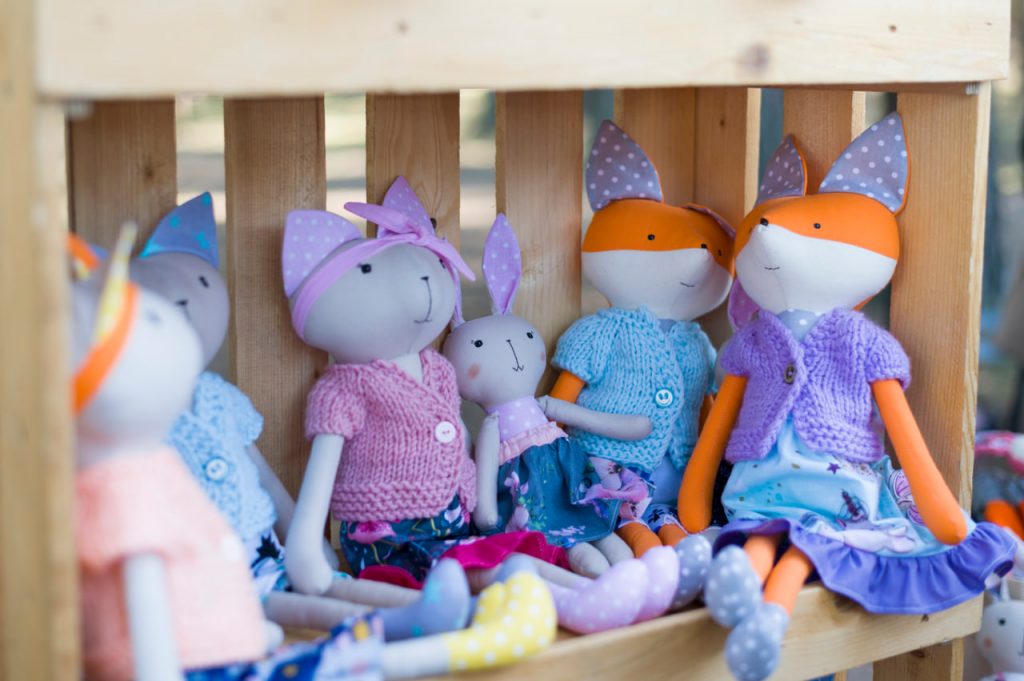Selecting the right fabrics and materials is one of the most important decisions when creating textile dolls. The choice of materials affects not only the look and feel of your doll but also its durability, ease of sewing, and overall quality. Whether you are crafting dolls for display or play, understanding the characteristics of different fabrics and materials will help you create beautiful, long-lasting creations. This guide will explore the best options and tips for choosing fabrics and materials specifically for doll-making.
Understanding Fabric Types
When it comes to doll-making, fabric choice is about balancing texture, strength, flexibility, and aesthetics. Here are some of the most popular fabric options for textile dolls:
- Cotton: Cotton is a favorite among doll makers because it is soft, easy to sew, and widely available in many colors and patterns. It’s breathable and durable, making it ideal for the body and clothing of dolls. Quilting cottons are particularly popular due to their consistent weave.
- Linen: Linen offers a slightly rougher texture than cotton but has excellent strength and a natural look. It ages well and is perfect for rustic or vintage-style dolls. Linen can be a bit more challenging to sew because it frays easily.
- Felt: Felt is a non-woven fabric that doesn’t fray, making it easy to cut and sew. It is often used for doll accessories, hair, and small details. However, it can be less flexible and sometimes less durable for larger doll parts.
- Fleece: Fleece is soft and plush, providing a cuddly feel for dolls intended for children. It’s stretchy and easy to work with but can be bulky when stuffing.
- Velvet and Velour: These fabrics add a luxurious texture and appearance to dolls but can be slippery and tricky to sew. They are often reserved for special clothing or decorative accents.
- Muslin: Muslin is a plain weave cotton fabric that is inexpensive and easy to work with. It’s often used for prototype dolls or practice projects because of its affordability.
Selecting the Right Stuffing
Stuffing plays a critical role in shaping your doll and determining its softness and weight.
- Polyester Fiberfill: The most common stuffing material, polyester fiberfill is lightweight, washable, and hypoallergenic. It offers good resilience and is easy to manipulate for shaping limbs and bodies.
- Cotton or Wool Batting: Natural stuffing options like cotton or wool offer a more organic feel but can be heavier and less bouncy than polyester. Wool is also more expensive and requires more care.
- Plastic Pellets: Often used to add weight to a doll’s hands, feet, or body, plastic pellets create a more lifelike feel and help dolls sit or pose better. They are usually placed in small fabric bags inside the doll to avoid contact with stuffing.
- Foam: Foam inserts or padding can be used to create structure in certain doll parts but are less common for full doll stuffing.
Choosing Threads, Needles, and Tools
Good materials are not limited to fabrics. The right sewing tools and accessories impact your doll’s quality.
- Thread: Use strong, high-quality polyester or cotton thread that matches your fabric color. For hand-sewing, embroidery floss can add decorative stitches.
- Needles: Sharp, fine needles are essential for sewing small pieces and detailed parts. Use hand needles sized for your fabric weight or a sewing machine needle suited for delicate fabrics.
- Other Tools: Scissors, pins, stuffing tools, and fabric markers are indispensable for precision and ease during the sewing process.
Adding Details and Decorations
Details bring personality and uniqueness to your doll.
- Embroidery Floss: Perfect for facial features, hair, and decorative stitching. It comes in many colors and allows for fine, detailed work.
- Buttons and Beads: Often used for eyes, buttons and beads add texture and charm. Choose sizes that fit the scale of your doll.
- Fabric Paints and Markers: These allow you to add facial expressions, freckles, or other decorative elements directly onto fabric. Use fabric-safe and non-toxic paints for safety and durability.
- Yarn and Wool: Ideal for hair, yarn offers a wide range of textures and colors, while wool roving can create soft, natural-looking hair or fur.
Tips for Choosing Materials
- Consider the Purpose: If the doll is for a child, prioritize washable, durable, and non-toxic materials. For display dolls, focus on fine fabrics and details.
- Test Fabric Behavior: Some fabrics shrink or distort when washed, so pre-wash fabrics if necessary. Test sewing on fabric scraps before starting the main project.
- Balance Texture and Weight: Lightweight fabrics work well for smaller dolls, while sturdier fabrics may be needed for larger or more complex designs.
- Color and Pattern: Choose colors and patterns that match your doll’s character and style. Solid colors often work best for faces and limbs, while patterned fabrics add interest to clothing.

